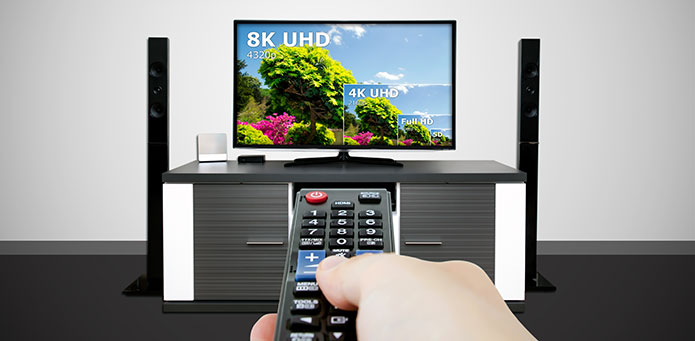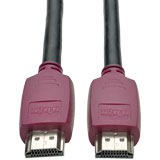
If you are in the market for a new TV, you have more features and benefits to sort through than ever before. With new picture and sound quality standards available, some of which replace old standards while others complement each other, it can be daunting just to keep up with the terminology.
Below are the top 10 technology standards and terminology you are likely to see while shopping for a new TV. Familiarize yourself with these so when you see them on a list of specs you will know how they might impact your purchasing decision.
1. Pixels
Pixels are the smallest elements that make up a digital image. More pixels = more detail in the image, i.e., higher image resolution.
2. 4K
Most new TVs will use a 4K resolution, meaning approximately 4000 pixels.
3. UHD
“Ultra High Definition” is a digital video format that is the successor to HD TV, with 4K UHD being the dominant resolution standard and 8K UHD as an emerging option.
4. HDR
“High Dynamic Range” technology uses tone mapping to accurately match the color and brightness in content to the capabilities of a display. It is the successor to “Standard Dynamic Range” and can complement UHD.
5. TrueHD
Dolby’s TrueHD technology offers digital surround sound designed to match audio bit-for-bit with its original recording, classifying it as “lossless.”
6. DTS
DTS-HD Master Audio is an alternative to the Dolby brand, offering lossless high-definition surround sound that was designed with home theaters in mind.
7. Deep Color
In reference to colors on a display, bits refers to the basic units of information that describe each pixel’s color. “Deep” bits indicate a higher quantity of bits and therefore more realistic color.
36-bit color = 68 billion colors and color shades
48-bit color = 281 trillion colors and color shades
8. Chroma Subsampling
Chroma subsampling compresses streaming content to reduce bandwidth without impacting the picture quality, with 4:4:4 offering the best chroma subsampling image quality.
9. HDCP
High-bandwidth Digital Content Protection protects digital copyrighted content as it travels from a streaming device to a TV, generally through HDMI or DVI connections.
10. CEC
Consumer Electronics Control is a feature for controlling HDMI-connected devices with a single remote control, like controlling your Xbox or Chromecast with the same remote you use for your TV. It will typically work for up to 15 devices.
Make the Right Connections
For these features to work fully and properly, make sure they are supported on all the equipment that connects your new TV with other devices. Tripp Lite offers a vast selection of cables, hubs, docks, extenders and other products that support 4K UHD, HDR, chroma subsampling and every other technology listed above.

Enjoy the richest color and sound your TV has to offer with help from Tripp Lite. View Solutions.





